Run, Bus... RUN!
Run Bus... RUN!
Demolition
Time to get dirty. Then, wonder if we really wanted to do this.
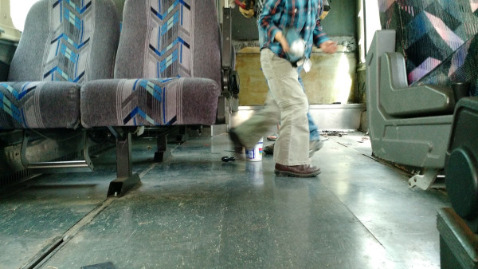
First, out came the seats. I had some good (little) help. Lots of bolts; some quite stubborn. Seats were in pairs, mounted in a rail that ran the length of the bus on each side, and bolted to the side walls, as well.
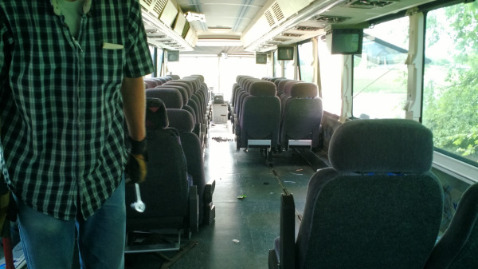
While I didn't actually weight them, I'm pretty sure each pair of seats weighed about 75 pounds (maybe more). It was a quite a chore carrying them out. Took a couple days.
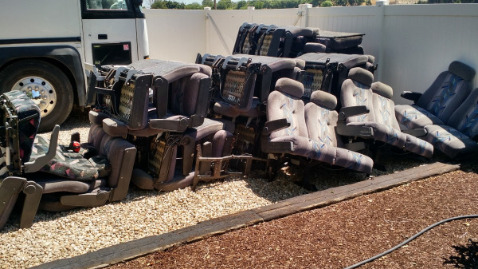
Wasn't sure what to do with them yet, so just stacked them by the bus. Not the most convenient place to put them, but wasn't sure what else to do with them. Not much of a market for used bus seats where we lived. Tried to sell them, but eventually just gave them away to anyone that was interested.
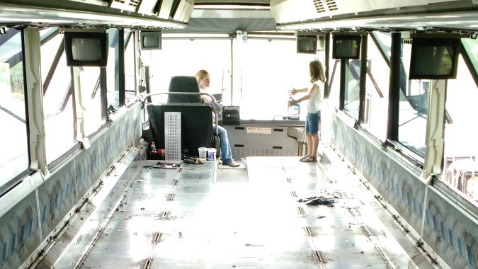
With all the seats out, the next focus was on the overhead racks. It didn't take long to realize that they were probably assembled in a factory while they were outside the bus, and were then brought in through the front, before the windshield was put in. Lots of unscrewing and cutting with an angle grinder ahead.
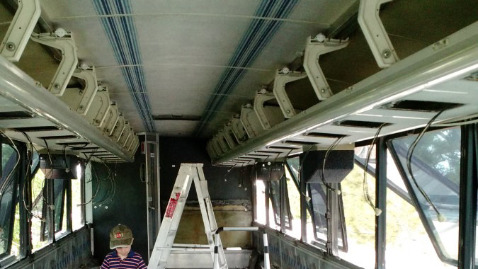
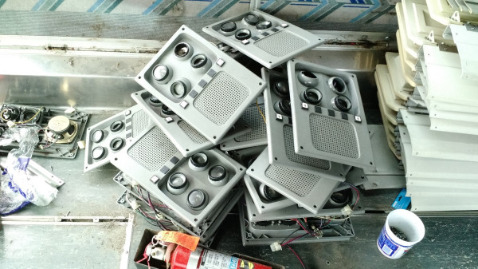
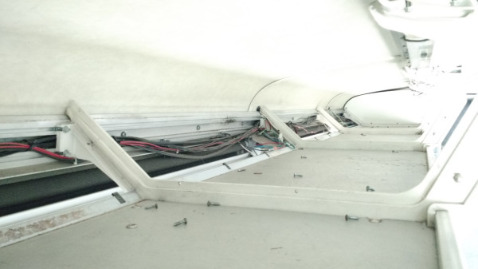
A lot of the plastic supports were just broken off, but the extruded aluminum had to be cut into more manageable pieces, as everything had to go out through the single front door, or through a window.
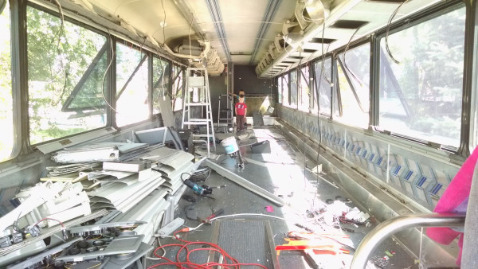
Tried to sort through all the parts, thinking that some might be usable to someone out there... but who? Wasn't any market for the seats. :-\ I also spent considerable time separating as much of the aluminum as possible to recycle. But, in the end, it just wasn't worth all the hours trying to get it "clean" for the best price possible (which wasn't very much at the time anyway).
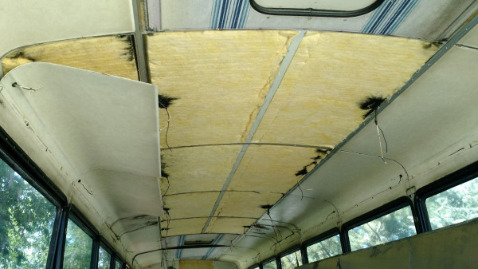
With the luggage racks down, we started removing the aluminum ceiling panels, as we wanted to have the ceiling recovered with poly-something, closed-cell spray foam insulation. Some of the large flat panels from the center of the ceiling were kept and reused later on. Nice pieces of 1/8" aluminum, for sure.
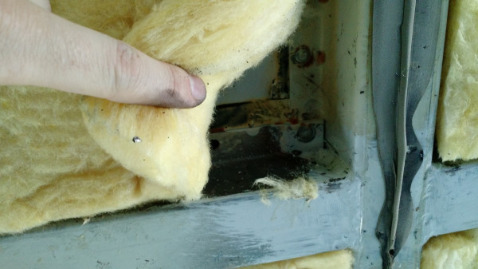
The space left to fill, after removing the stock insulation, was around 2". Not great, but better than nothing. Also, not sure worrying about ceiling insulation was that important, considering how many windows we had planned to leave visible.
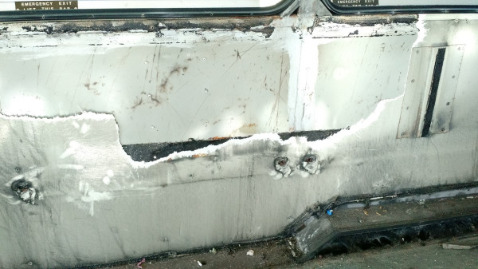
Started to remove the walls, to see if I could get to the factory insulation there, but found they were sheeted over with steel panels (in some areas - just fiberglass panels only in others). Later, when I was drilling the dryer vent, I was able to confirm that these walls also had a foam-board type insulation within them, so just left the fiberglass sheets it in place.
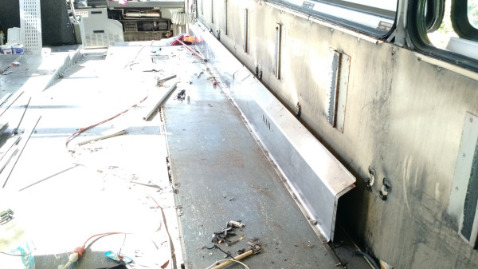
The metal duct work also needed to be removed. An angle grinder was great for those occasional but stubborn rusty screws. It was pretty amazing how much garbage got stuck / sucked down in these things. Coins, playing cards, all sorts of stuff (nothing super valuable, though, unfortunately). But, was fun for the kids.
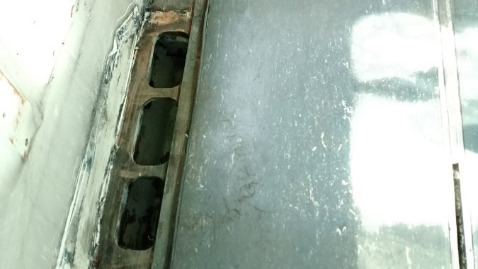
Below the stainless steel duct work were vents that went down to the original heating and cooling system.
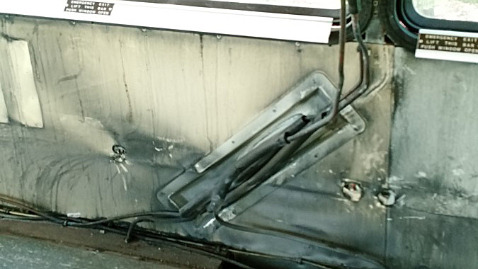
Copper refrigerant lines came up through the floor to air conditioning units that were mounted inside the overhead racks, about half way back in the bus. The original heating and AC system (which didn't work, and hadn't worked for some time) was pretty large. It apparently took quite a bit to keep passengers in these larger buses comfortable.
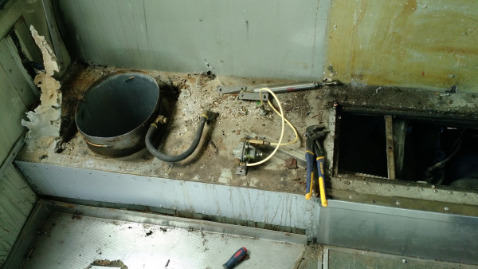
Then, the all-stainless bathroom had to come out (no sink, just a toilet). Wasn't too difficult to get the pieces on the surface out... but the back bench beneath, that ran the width of the bus, was in need of some work. Lots of rust, with the tanks below yet to tackle.
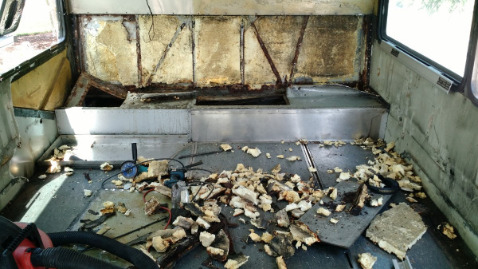
The tanks beneath the seat (not shown) by the engine, took about 5 hours to tear, cut, break, pound, pull and pry out. I was a different race when I was done. The seat above had almost rusted away. So, most of it was cut out, and later replaced with new panel pieces made from square steel tubing.

I don't quite understand how that much moisture got where it did, but it sure did. Penetrol was also used in surface rust areas to stop progression.
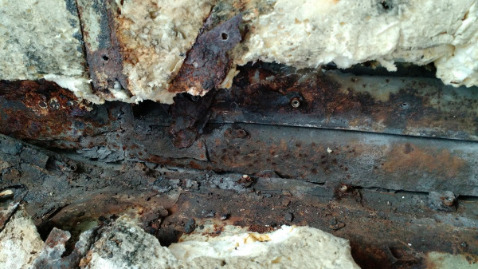
Kept having to remind ourselves, however, that what was there probably took over
20 years to get that way. So, we weren't that concerned, as this project is the means, and not the end.
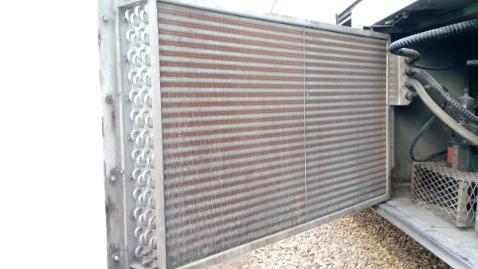
This was the largest coil for the original cooling system in the bus, and was mounted on the exterior of the bus, on a swing out door.

Air was apparently sucked in through the coil by these two large 24V DC fans. Since nothing worked, all of these components were removed, and the space reclaimed for the propane tanks and additional storage.
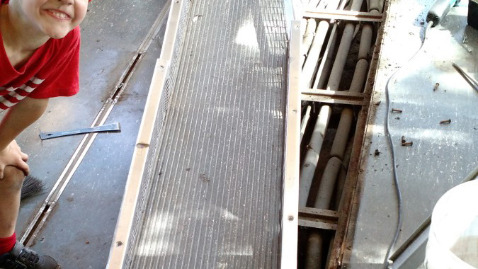
Upon removing the ramp near the front of the bus, we discovered that this is where many of the coolant and electrical lines ran the length of the bus.
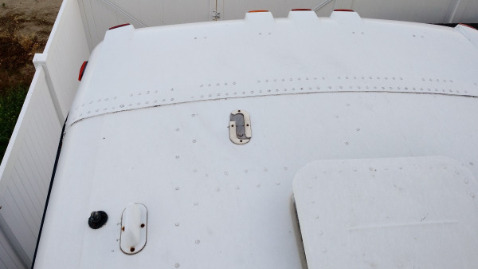
Some old external broken antennas on the roof were also removed and later covered over to ensure water couldn't further penetrate the roof.
© Copyright 2017-2025 Run, Bus... Run! (RBR). All rights reserved.